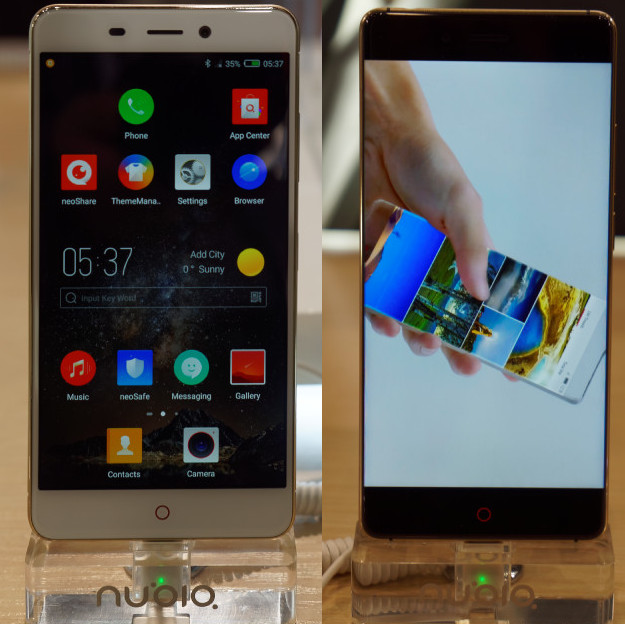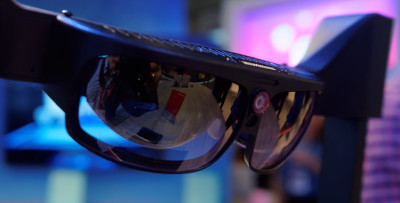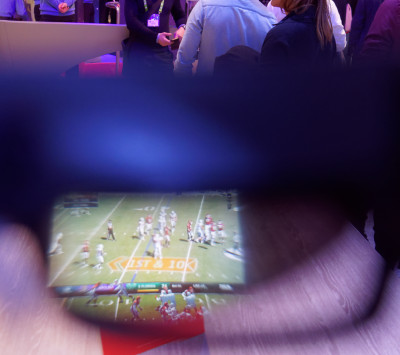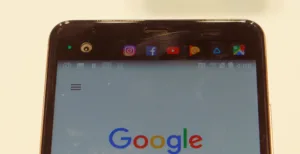Nubia is a Chinese brand that is aiming to follow Xiaomi into the premium segment and wants to develop outside China and owned by ZTE. At MWC, the N1 was its newest phone, although it also had the Z11 which was officially launched in December.
The N1 uses a 5.5″ FullHD LCD and a Mediatek Helio P10 with 3GB of Ram and 32GB/64GB of storage (upgradeable by microSD). Cameras are both 13MP and the rear camera has PDAF An unusual feature is a big battery at 5000mAh that is claimed to last three days.
The Z11 uses a Snapdragon 820 and features a ‘bezel less’ display with Gorilla Glass. It has 16MP (with PDAF and OIS) and 8MP cameras with 6GB of RAM and 64GB of storage (+ up to 200GB). Battery is 3,000mAh.
 The Nubio N1 is on the left, the Z11 on the right. Image:Meko
The Nubio N1 is on the left, the Z11 on the right. Image:Meko
ODG was showing its AR glasses that it is aiming at professional users. The R-9 has been shown before and is currently running on the Snapdragon 821 chip to produce a 1080p image with a 50º field of view. Battery life is 3.3 hours for the complete system. The company told us that it plans to upgrade to the new 835 processor in Q2 with mass production due to arrive around the end of the year. Although we have often heard that corporates are more bothered about function than image quality, ODG and Vuzix are doing a good job in raising the quality standard for A/R sets.
 ODG’s R-9 A/R Glasses are due to ship at the end of the year. Image:Meko
ODG’s R-9 A/R Glasses are due to ship at the end of the year. Image:Meko
 Our best effort in capturing the ODG AR Image! Image:Meko
Our best effort in capturing the ODG AR Image! Image:Meko
Peraso of Canada told us about its USB solution for 802.11ad/WiGig and the company was at MWC to meet clients and to promote the idea of using its chips in dongles that can allow the support of the 60GHz interface using dongles or docks connected to mobile devices via USB. Dongles can be used for fast file transfer. The chips can also be integrated into mobile devices.
Qualcomm was showing that Sony was the only vendor at MWC that had announced a phone based on the Snapdragon 835. Of course, the world had been expecting the Samsung S8 also to announce that it was using the chip. The company was showing that it is still working on boosting bitrates and was showing Gigabit LTE on the Sony XZ premium. It is also working on 802.11 ad (WiGig). The 60 GHz technology tends to be short ranged, but Qualcomm was running with 1.X gigabits of throughput from an access point some 45 metres away. The company told us that it is still working with Intel to ensure compatibility between the chips from the two companies. Early docks using WiGig were developed using a special ‘point to point’ protocol. Thercompany also had an HDR demo that was intended to show ‘why you would need HDR’, however, to me, it just showed why you really need a brighter and more efficient display than the current range of phones deliver. It would have been very easy to pick the wrong one when staff asked ‘which phone has HDR support’ (fortunately, for our credibility, we got it right, but it was not obvious – unlike the demo by Dolby on the G6 (Dolby Demonstrates Dolby Vision Smartphone Performance).
Rockchip had a meeting room where it was talking to customers. It was highlighting the RK1608, an image processing chip that can support image enhancement in dual camera set-ups. The company was also showing the RV1108 chip for 360º cameras and which can support real time stitching. The chip was announced at CES. The RK3328 is an SoC for STBs that can support performance up to 2160p60 and supports HEVC and VP9 codecs.
Samsung Display was at the show, but in a closed booth and not talking to press or analysts. At the door was a big sign saying ‘Welcome to the AMOLED World’.

